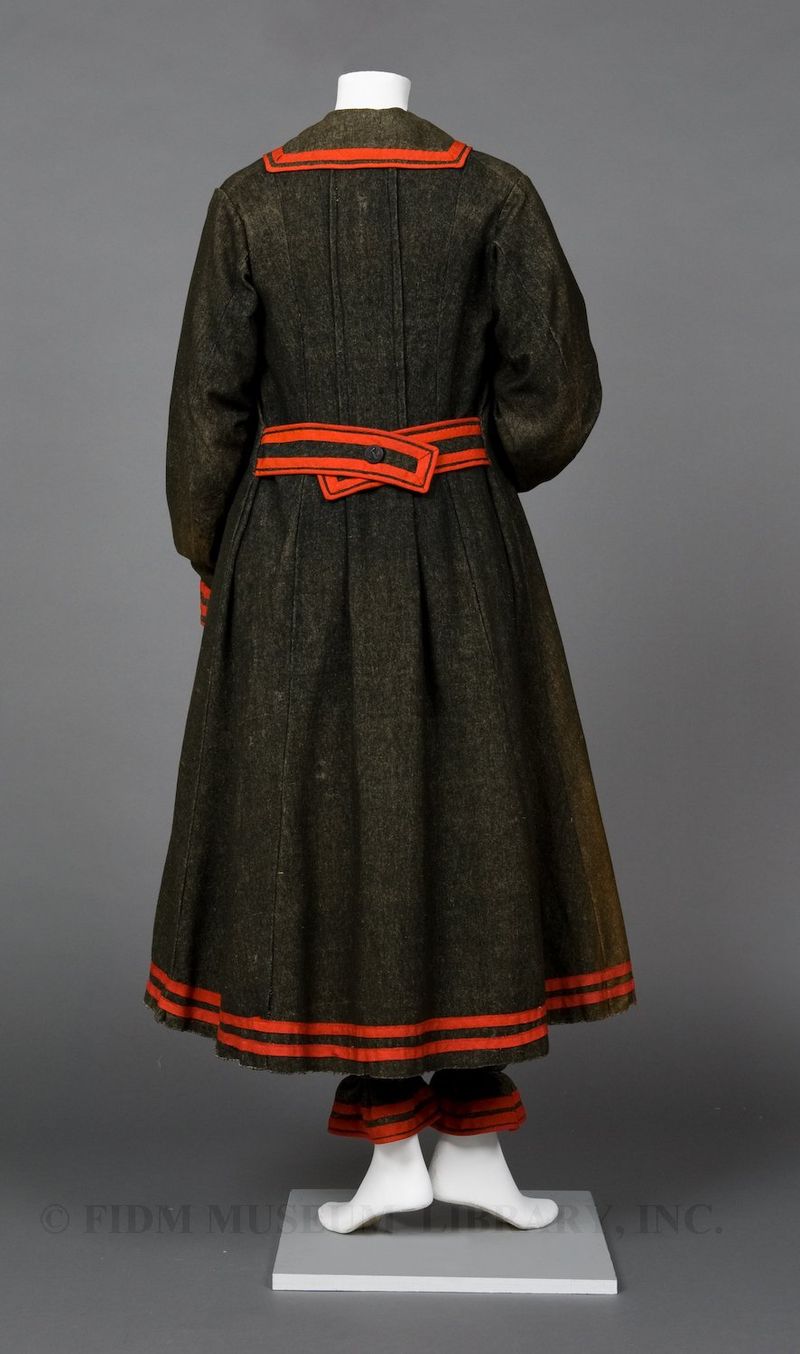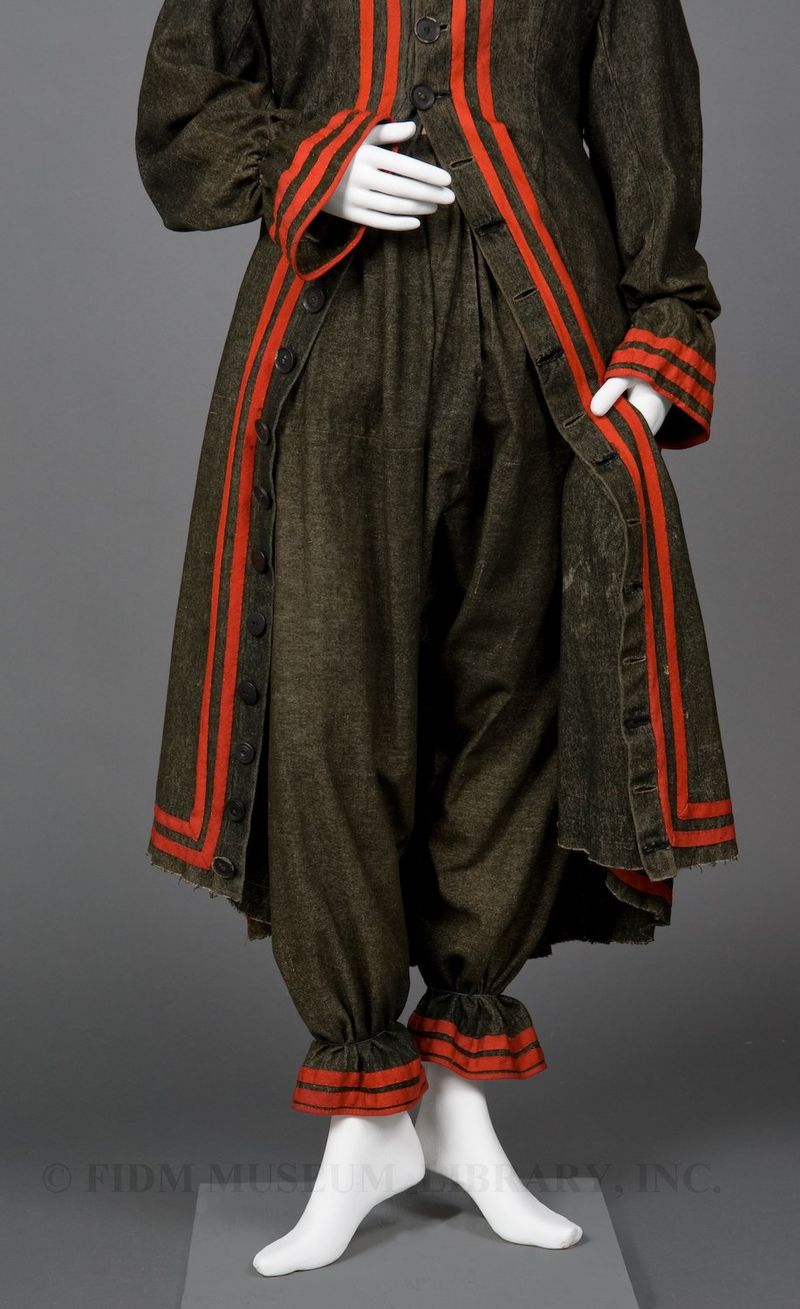The start of summer
The unofficial start of summer is just a few days away. In the United States, the Memorial Day holiday (always the last Monday in May) marks the beginning of the summer season. Depending on where you live, the climate may or may not cooperate. No matter what the weather, you're probably plotting a weekend getaway and plans for summer fun. This blog post, first published in 2009, examines a crucial component of the summer wardrobe: swimwear. Dating from the late 19th century, this "bathing suit" is unlike any swimwear you'd see on the beach today. Made from a wool textile, it looks more like a full-length coat! Read on to find out why 19th century women wore such modest swimwear.
 Woman's bathing ensemble
Woman's bathing ensemble
c. 1875
Museum Purchase
2006.25.3AB
This bathing ensemble wasn't meant for vigorous lap swimming or surfing. In the nineteenth century, swimming or "taking the waters" meant simply submerging oneself in water, either at a medicinal hot spring or in the ocean. As swimming was considered a kind of medicine, bathing garments were designed for function first, fashion second. Women's swimwear was intended to keep the body warm in cold water, to protect against sunburn, and to maintain modesty through full-body coverage. To complete the look, a nineteenth century swimmer would have also worn a head covering, stockings, flat soled beach shoes and possibly carried a parasol. Bathers interested in total privacy would have rented a bathing machine, a small, wheeled hut which was pushed or pulled into the water by horses or attendants. This small building provided individual bathers with an extremely secluded bathing experience.
There were, of course, some who bathed for recreation rather than health. The mingling of men and women at seaside resorts was a somewhat thorny situation, resulting in much commentary. An August 10, 1887 New York Times article titled "Seaside Manners" questioned the relaxation of social norms which occurred at the beach, noting, "a custom has grown up of lolling about, chatting, and making a social hour of the bath, all in bathing costume, which seems undignified not to say immodest." At some beaches, men and women bathed at different times, with men allowed to bathe in their "birthday suits" while women were always required to wear full dress.
The jaunty red trim which enlivens this otherwise plain ensemble is typical of early swimwear. Dark wool bathing costumes were often styled to resemble nautical uniforms, with red or white braided trim and sailor collars. Some early bathing costumes were made of silk, which tended to leach its dye onto the wearer when wet. Both wool and silk clung to the skin when wet, so many bathers had a coordinating cape or wrap which was worn over the wet bathing costume.
Stylistically, the most important element of this bathing costume is the trousers, or bloomers. To contemporary eyes, these full bloomers seem like they would be extremely cumbersome in the water. As noted in this post, however, trouser clad women were an extreme novelty in the nineteenth and early twentieth century. The few women who did attempt to wear bloomers as everyday dress in the nineteenth century were ridiculed. It was only through their adoption for sporting and athletic activities that trousers became acceptable, and eventually fashionable, everyday wear for women. This process was ongoing throughout the first few decades of the twentieth century. See examples of twentieth century swimwear from our collection here.

